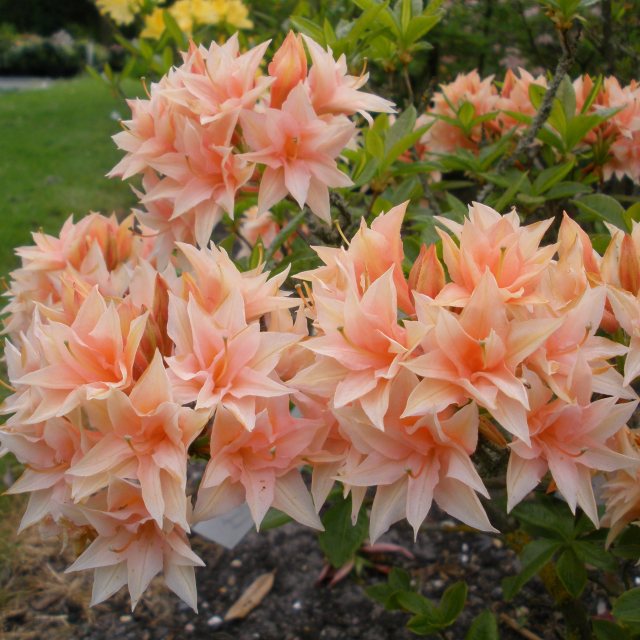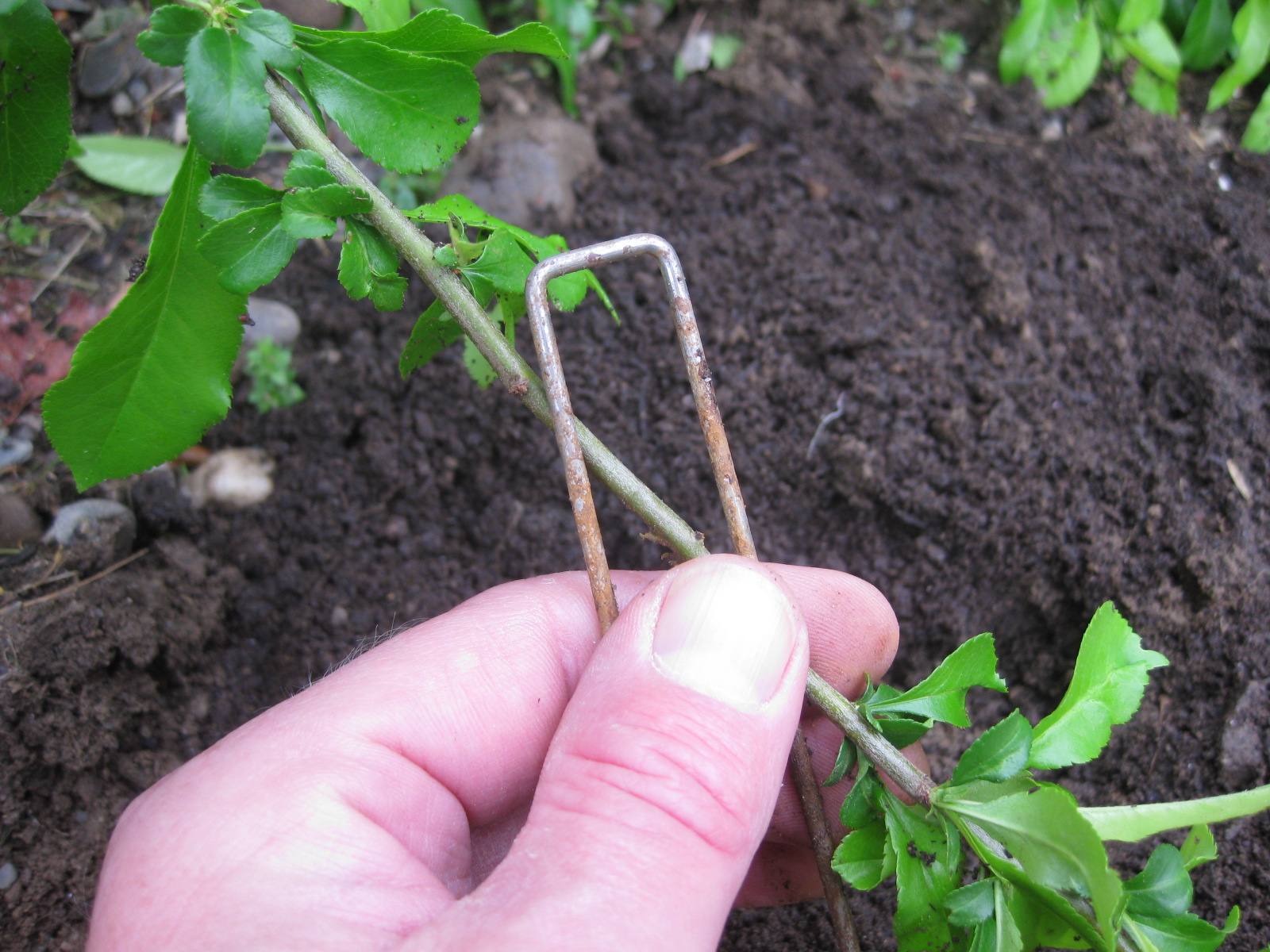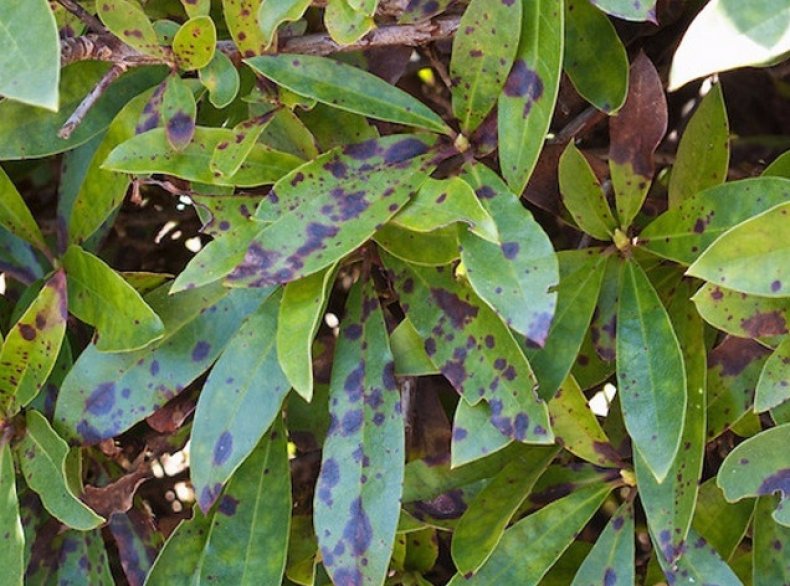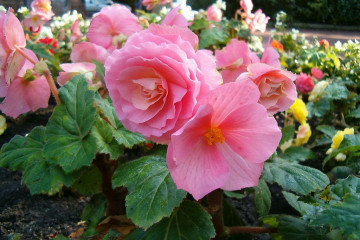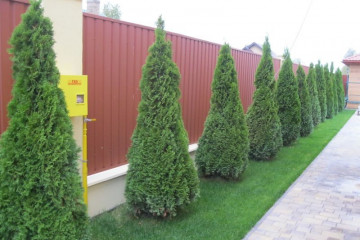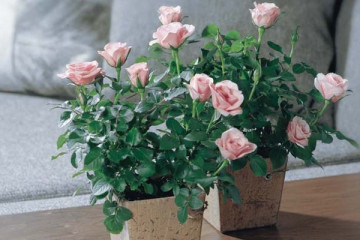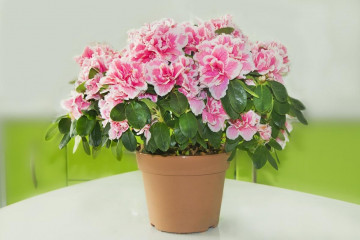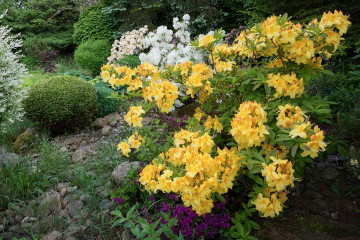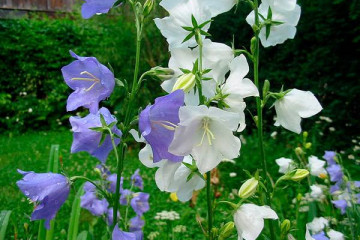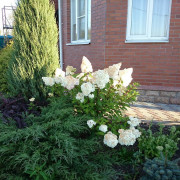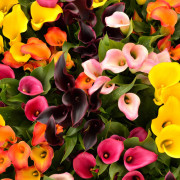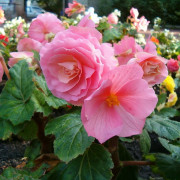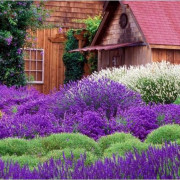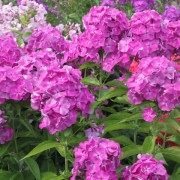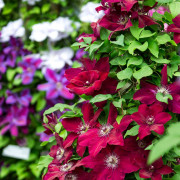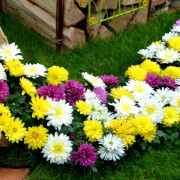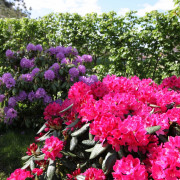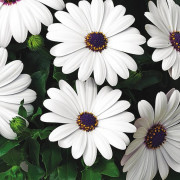Azalea garden - growing and care on the street
Content:
- Garden azalea - what kind of flower is it, what family it belongs to
- Breeding history
- Popular winter-hardy plant varieties, their description
- Planting and care of garden azaleas in the open field
- Winter care for azaleas
- Features of flowering plants
- Flower reproduction methods
- Growing problems, diseases and pests
Azalea (Azalea) is a colorful and decorative plant species that turns any area into a bright attractive place. Azalea is becoming more and more popular in gardening. Botanists continue to develop new hybrid varieties.
Garden azalea - what kind of flower is it, what family it belongs to
The azalea shrub is a perennial of the Heather family native to China, Japan and North America. Many species are found in their natural habitat. Until a few decades ago, the plant was considered suitable for growing in pots and greenhouses. Shrubs for open field cultivation are currently popular.
Azaleas can grow in height from 30 cm to 3 m. Small elliptical leaves are located on thin shoots covered with light bark. A wide range of colors of inflorescences: white, pink, yellow, purple, red or orange.
Breeding history
In the early 19th century, Captain Welbeck managed to bring a flowering azalea bush from India and transfer it to a botanical garden near London. The species became the ancestor of all hybrids obtained by scientists as a result of long-term selection. In Russia, the first shrub cultures were in botanical gardens. Later, breeders and botanists bred more than 12 thousand all kinds of hybrids.
Popular winter-hardy plant varieties, their description
Russian flower growers prefer deciduous varieties of shrubs, which are winter hardiness and large inflorescences of various shapes. Common winter-hardy varieties:
- Chanel;
- Freya;
- Klondike;
- Tunisia;
- Sonya;
- Golden Lights;
- Golden sunset;
- Bright orange Gibraltar.
Most deciduous varieties are characterized by frost resistance when the temperature drops to -26 ℃. All shrubs are slow-growing, reaching maximum height only after 10 years.
The lowest varieties are Golden Sunset and Gibraltar, reaching a height of no more than 1 m. Other representatives of the species grow upwards from 1.4 m to 2 m. The leaves are olive to dark green, in autumn they change color to red-orange. Inflorescences can be either monochromatic or interspersed with a second color. Deciduous azalea prefers a sunny location with little shade, standard feeding and plenty of moisture.
Planting and care of garden azaleas in the open field
Bush azalea prefers to grow on acidic soils containing sand and peat. For the full development of a perennial bush in the country, the acidity of the soil is maintained at a level of 4.0-4.5 pH.
Japanese azalea: planting and care in the open field
It is recommended to plant azalea seedlings in early spring before the juice begins to move or in early autumn, so that the plant has time to take root before the onset of cold.
A well-chosen planting site is essential for the care and cultivation of azaleas in the garden. This should be a sunny place with diffused lighting. A hole is dug in the selected area according to the size of the root system. From the transport pot, the street azalea is removed together with an earthen lump and placed in the center of the pit, the roots are covered with a substrate on top.
Watering plays an important role in the care of Japanese shrubs. Azalea requires a lot of water (up to 20 liters per adult plant). It is important to monitor the moisture content of the soil around the bush, to prevent it from drying out. During the day, the bush is sprayed with a spray bottle, and containers with water are placed near the plant.
Another important point when growing a garden azalea is a properly selected substrate. It should be acidic and breathable. The substrate is prepared from the following components in equal parts:
- humus;
- sand;
- peat;
- leafy, turf and coniferous land.
The first feeding of the flower occurs 3 weeks after planting, the next one is carried out after 20 days. As a fertilizer, any top dressing for decorative flowering plants is suitable.
Pruning an azalea bush
In the spring, sanitary pruning is carried out, removing only dry and diseased stems. This is due to the fact that in the spring the plant has formed flower buds. The decorative formation of the bush is carried out in the fall after the wilting of the inflorescences. As a result, only healthy, strong shoots remain, all dry branches and dried flower stalks are removed.
With proper care of a young plant, after 2-3 years it will delight you with lush flowering. Many growers consider azalea to be a capricious plant and do not want to get involved in the cultivation of an ornamental Japanese bush.
Winter care for azaleas
Taking care of your azalea in winter is just as important as it is during other seasons. Often they give preference to deciduous shrubs for frost resistance, but more sensitive species need additional shelters made of agrofibre, roofing material, frames. They are removed in the spring.
Evergreen shrubs moisturize, after watering, a layer of compost from pine bark, peat and oak leaves is spread around the bushes. This agrotechnical method protects the roots from drying out and temperature fluctuations.
Features of flowering plants
Depending on the timing of flowering, all types of garden azaleas can be of 3 types:
- early flowering (first flowers appear in December);
- medium flowering (flowers appear in February);
- late blooming (flowers appear in April).
The first young plant blooms 2-3 years after planting. With proper care and comfortable conditions, this process lasts from 2 weeks to 2.5 months.
Azalea flowers are tubular or flat, monochromatic or bicolor. Some varieties have a rich aroma. There are 4 main types of flowers in shape:
- Simple (5-6 petals).
- Terry (the number of petals is different, some are formed from stamens).
- Simple “flower within a flower” (10-12 petals, calyx forming petals).
- Terry "flower in a flower" (30 or more petals).
Flower reproduction methods
An ornamental shrub is propagated in several ways: by seeds, cuttings, layering (dividing the bush). The seed method is rarely used, because the flowering of the plant will take a long time. Cutting is a laborious process that lasts 1.5-4 months. Made in early spring.
The easiest way to propagate a crop is with the help of layering, when the side shoots are fixed as close to the ground as possible and sprinkled with earth. After rooting, they are separated. It is best done in the spring, before the juice begins to move.
Growing problems, diseases and pests
Garden azalea can suffer from fungal infections and insect pests if not properly cared for. The most common diseases of the shrub are rot, rust, leaf spot. In the fight against infections, spraying with fungicides or copper sulfate helps.
Sometimes flower growers are faced with such a phenomenon as the lack of flowering. There may be several reasons:
- unsuitable acidity of the soil;
- lack of scattered light;
- lack of moisture;
- increased air temperature;
- deficiency or excess of fertilizers.
Original ornamental shrubs require careful maintenance. Without regular watering, they will wither, but, if all requirements are met, the azalea will thank you with a long flowering.


